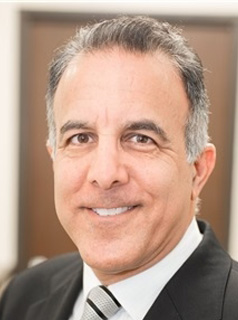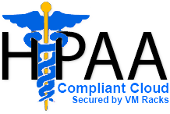Why Telemedicine in the Treatment of Diabetes, Shingles and the Flu!
 Telemedicine and the Flu
Telemedicine and the Flu
The flu, or influenza, is characterized by cold-like symptoms, muscle soreness, headache, fatigue, fever, and upset stomach. For most healthy adults the flu is a few weeks of discomfort, weakness, and mild pain, but for pediatric and geriatric patients the risk is much higher. Many Americans forego a visit to the doctor in cases of cold and flu, thinking they will be told to simply rest and drink plenty of fluids. While the latter treatments are important in managing any illness, some cases of cold and flu warrant a trip to the doctor. The United States Center for Disease Control reports, “A total of 26,694 laboratory-confirmed influenza-associated hospitalizations were reported between October 1, 2017 and March 17, 2018. The overall hospitalization rate was 93.5 per 100,000 population.” The same report concluded that there were 53 deaths related to flu last year. Flu related death could be avoided if caught early and treated properly, which is why speaking with a doctor in person, or via teleconferencing is important. Telemedicine opens the door for patients with flu symptoms to skip waiting rooms and long drives to a clinic and consult with a physician from the comfort of home.
When left untreated, influenza can worsen and become pneumonia. However, not all Americans have access to a family doctor. Some rural communities don’t have local medical help, forcing residents to drive sometimes for hours to reach a clinic. In other cases, patients may be too ill, or physically incapable of making the trip even to a nearby clinic. This is when telemedicine comes in handy. The Insider writes, “there are tremendous benefits to telemedicine, especially in rural states, where you tend to be more isolated. Or if you’re a single mother with three or four kids, it’s very difficult to find a way to get to the doctor’s office if one of the children is sick, and telemedicine offers more opportunities. Telemedicine can mean earlier and less expensive diagnosis.”
Telemedicine, remote medical provisioning provided via technology, debuted in the 1960’s to provide long distance medical care to astronauts. Now, with the inclusion of advanced technology, it has become a standard alternative to traditional healthcare. Telemedicine usually includes some form of video transmission, or at the very least, online chat. Patients can sign up for an online medical consultation through a short survey, after which they are connected to a licensed U.S. medical practitioner, who can diagnose, offer advice, and even prescribe medication.
Reasons Telemedicine is Beneficial During Flu Season
1. Avoiding Germs in the Waiting Room: It isn’t only patients who are unable to make the trip to a medical clinic who benefit from telemedicine. All patients can benefit from this type of technology-based healthcare during flu season. Hospital waiting rooms are packed full of sick people, and somebody with a weakened immune system could potentially get worse after a long wait in a germ-filled room. Each strain of flu is different, making it possible to suffer from two separate viruses one after the other.
2. No More Sick Days: Whether you have sick days left to burn, or you’ve run out of paid time-off for the year, it can be frustrating to have to miss work to head into the doctor’s office. Telemedicine makes it possible to consult with a physician without leaving work. For individuals who are well enough to work, but wish to speak with a doctor, online medical care lets you work while you receive the care you need.
3. 24 Hour Care: Most family medical clinics have a 9-5 schedule and require an appointment. This makes visiting a doctor difficult if symptoms begin after hours. According to Mark L. Friedman of Telemedicine Magazine; “When the illness strikes at night, or in some instances even during the day, the only available facilities for many people are hospital emergency departments. 24/7 telemedicine service provides a fast, cost-effective solution to this need for round-the-clock care. It enables treatment while avoiding unnecessary visits to overcrowded, high-cost, hospital emergency departments.” So, whether you wake up with a cough in the night, or you’re trying to get the kids lunches packed for school in the morning when a splitting headache hits, telemedicine provides access to medical help.
Each state is different with its laws pertaining to telemedicine. Some require a patient to have physically met with a doctor before receiving online medical care, while others are open to the concept of a completely internet-based exchange. Depending on your state, telemedicine may be included in your medical coverage; this is something to examine before applying for a one on one consult online.
Telemedicine to Treat Diabetes
Diabetes is an endocrine disorder that alters the way the body breaks down glucose in the blood. While glucose is necessary to fuel the body, too much of it can damage the internal organs, muscles, and nerves. After digestion, glucose enters the bloodstream, and in order to pass into the body’s cells, insulin must be also present. Insulin is the hormone that the pancreas secretes. When you eat, the pancreas produces the right amount of insulin to process circulating glucose. With diabetes, this cannot occur. Either no insulin is produced (type 1 diabetes), or the body is resistant to the insulin (insulin resistance) (NDIC, 2013).
Undiagnosed Diabetes in America
As many as 6.3 million adults in the U.S. have diabetes mellitus and do not know it. This undiagnosed health problem causes an estimated $18 billion in costs each year. Diabetes cost the U.S. economy around $174 billion in 2007, due to medical expenses and lost work time. That figure does not take into account the economic costs linked to undiagnosed diabetes. Annual healthcare costs for people with prediabetes continue to grow, according to experts Zhang and associates (2013).
Researcher Zhang and colleagues (2005) from the Lewin Group in Virginia along with associates from Ingenix Research in New Jersey studied the health care use patterns of a group of participants over a two year period leading up to the diagnosis of diabetes. This medical condition affects the human body at least 5 years or more before the actual diagnosis is made.
People who have “prediabetes” have blood glucose levels that are elevated, but not high enough for a diagnosis of diabetes. This condition raises the risk for the later development of diabetes, stroke, and heart disease. Also, people with prediabetes have an impaired fasting glucose tolerance (IGT). The good news is that people with this condition can lower their risk by losing only 5 percent of their total body weight through diet and exercise (NDIC, 2013).
BioHub: Quantum Leap toward Biological Cure for Diabetes
Researchers have made a quantum leap toward a biological cure for diabetes. The DRI BioHub is a bioengineered “mini organ” that mocks the pancreas. This organ contains cells that produce insulin, and it can sense glucose in the bloodstream. When this occurs, the organ releases the exact amount of insulin the body needs – in real time. For the millions of people with diabetes, the DRI BioHub could be the answer to their problems.
If someone has type 1 diabetes, their immune system accidently destroys insulin-producing cells in the pancreas. They have no “islet” cells, which are needed to process glucose. The DRI’s focus is to replace those cells. In recent clinical trials, researchers with the Diabetes Research Organization (2013) have transplanted islet cells from donor organs into people with type 1 diabetes. The recipients were able to achieve insulin independence with the use of this technology, In other words, they started producing insulin.
Scientists Now Have a Tool to Advance Diabetes Technology Forward
According to Dr. Ricordi at the Diabetes Research Institute, the BioHub gives scientists a tool that allows them to move cellular therapies and biological replacement strategies forward. While islet transplantation has been studied in humans, there are several challenges to overcome before it can be offered to all diabetics. These include:
• Supply – There is need for donor organs.
• Sustainability – There is a need for recipient to accept the cells long-term without requiring anti-rejection drugs.
• Site – The scientists still must identify an optional body site to house the new cells.
The DRI BioHub is designed to house healthy insulin-secreting islet cells, which can sense elevated glucose in the blood and release insulin in sufficient amounts. The scientists are currently developing and testing platforms for this mini organ, such as a biocompatible silicon scaffold. They also are looking at using the patient’s own abdominal veins. The researchers are confident that the BioHub will restore natural insulin production, but the duration of the cure is limited. Several anti-rejection drugs are needed for the mini organ to remain in the body. They do know that an islet cell transplant can work for more than 15 years, based on current studies.
Telemedicine: Healthcare’s New Frontier
If you have diabetes and hate going in to see the doctor, you should consider the many benefits of telemedicine. Doctors can make treatment options simple by using prescriptions. Telemedicine is a means of facilitating the distribution of healthcare resources to patients everywhere. It can speed up the diagnosis and clinical care delivery to allow patients to receive continuous assistance from virtual healthcare providers.
The Eruopean Space Agency (2005) set up a program to study the use of telehealth via satellite. The Telemedicine Working Group, composed of health professionals and patients, seeks to improve the effectiveness and acceptance of quality telemedical services. The use of satellite-bsed ICT for telemedicine is becoming more operational, and should be integrated into the existing European healthcare system soon.
Telemedicine to Treat Shingles
Shingles is a painful condition caused by the herpes zoster virus. When someone contracts chickenpox, the herpes zoster virus remains in the body’s neural network. During years, it may be “dormant,” which means there is no active rash or illness. Later on, however, a shingles rash with blisters appears on the chest wall or other parts of the body (Mayo Clinic, 2013).
Postherpetic neuralgia (PHN) is a complication of shingles. While many cases of shingles resolve within a few weeks, some people have prolonged symptoms, particularly pain. This occurs when the virus affects your nerve fibers and skin, causing a burning sensation that interferes with appetite and sleep. PHN is more common among older adults, especial those over the age of 60 years. When shingles occurs on the face, the chance of developing PHN is significantly higher than if it occurs on the chest or extremities.
At the present time, there is no cure for postherpetic neuralgia. However, there are some treatment options that relieve your symptoms. Most signs and symptoms are typically limited to the area where the shingles first occurred. These include burning or stabbing pain, itching, numbness, weakness, or paralysis. PHN occurs when nerve fibers are damaged during the initial shingles outbreak. These damaged fibers cannot send messages from your skin to your brain as they should. Instead, the messages get exaggerated, causing aggravating, chronic pain that could persist for years (Mayo Clinic, 2013).
Study Shows Lidocaine Better than New Drug KAI for Postherpetic Neuralgia
Researchers Dr. Cousins and colleagues (2013) studied the safety and efficacy of a new therapy called KAI-168. This is an epsilon protein kinase C (ePKC) inhibitor. When compared to lidocaine and placebo, they found that KAI could be safe, but not useful for treating postherpetic neuralgia. However, lidocaine was discovered to benefit patients with pain related to this condition.
Experts estimate that around 15 percent of patients who have herpes zoster eventually go on to develop postherpetic neuralgia. The researchers evaluated the analgesic properties of the ePKC inhibitor and discovered that it was not as effective as other options. However, it was safe and well-tolerated among patients.
The study was done during three different treatment periods. The 23 patients received subcutaneous KAI at 25 mg, a placebo solution, or lidocaine hydrochloride 700 mg during each treatment session. The investigators concluded that lidocaine was a more effective treatment for postherpetic neuralgia than KAI. This is why so many doctors today use topical lidocaine patches to treat this form of shingles.
Researchers Uncover Cause of Postherpetic Neuralgia Symptoms
Dr. Oaklander and colleagues (2008) recently studied postherpetic neuralgia pain mechanisms. In these studies, spontaneous C-nociceptor activity was documented in patients with this condition. In a skin biopsy study, researchers found that PHN affected nerves and ganglia due to chronic neuronal loss and quiescent scarring. Microneurographic studies correlated these findings, as well.
Pathological studies of tissues from patients with trigeminal neuralgia (a form of PHN) showed that brief lancinating pains reflect neurotransmission between adjacent axons. The chronic pain mechanism remains uncertain, however. Oaklander and associates believe that the itching is caused by unprovoked firing of the peripheral and/or central neurons.
Lidocaine Patch Location Influences Effectiveness in those with PHN
Shingles researchers Nalamachu and associates (2013) found that the anatomic location of the lidocaine patch contributed to effectiveness and tolerability for patients with postherpetic neuralgia. The 5% patch is considered first line therapy for patients with PHN.
An analysis was conducted to determine whether or not the location of the patch mattered. Placement occurred over portions of the neck, trunk, and extremities during a four week study. Effectiveness was measure with the Brief Pain Inventory (BPI) survey, and tolerability was evaluated based on patient reporting. The researchers concluded that the 5% topical lidocaine patch was generally well-tolerated and effective for each anatomic region.
Telehealth Efficient and Effective for Older Adults with PHN or other Chronic Conditions
If you think you have shingles or if you have postherpetic neuralgia, consider consulting the services of an online doctor. The virtual healthcare provider can issue you an online prescription so you do not have to travel for the visit.
Telehealth researchers Gellis and colleagues (2012) evaluated the use of telemedicine services for homebound older adults in a randomized controlled clinical trial. This form of healthcare delivery is emerging as a viable intervention to treat chronic conditions in older people, such as PHN, heart failure, and chronic lung disease. To engage older adults in self-care management of their conditions, researchers believe that telehealth is the answer.
Random effects were evaluated on health, mental health, and service utilization outcomes among homebound medically ill older adults. After a 12 month study, the telehealth intervention group reported greater increases in general health and social functioning compared to the control group who had more emergency department visits.
The implications of this report are that telehealth is an effective and efficient method of systematically delivering care to homebound older people. The use of this technology benefits people who have difficulty accessing health care due to transportation issues, isolation, or disability.

WARNING: Limitations of Online Doctor/Medical Consultations and Online Prescriptions, QuickRxRefills Cannot and Will NOT Prescribe, Dispense, or Resell any and all medications Narcotics/Controlled Substances (this policy is fully enforced by the Drug Enforcement Administration (DEA)) for Anti-depressants, Pain, Anxiety, Weightloss, Sleep, ADHD/ADD, Anabolic Steroids, Testosterone Replacement Therapy and any and all Medications that contain GabaPentin or Pseudroephedrine including non-controlled substances or any medications that are considered controversial, Off Labeled (Growth Hormone aka HGH) or recalled in nature such (i.e. Retin-A, Accutane). Furthermore, QuickRxRefills is not a substitute for an office based physician in your location nor is it a substitute for Emergency Medical Care or 911. If you do experience a "true" medical emergency your are encouraged to pick up the phone and dial 911 as soon as possible.






